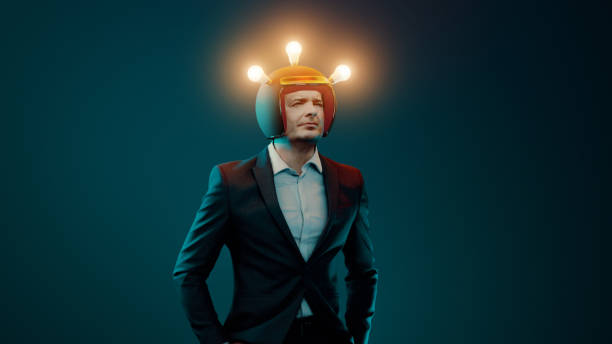In the realm of science fiction, mind-reading technology has long captured the imagination of writers, filmmakers, and audiences alike. From telepathic communication to mind control, the idea of deciphering and manipulating thoughts has been a staple of futuristic narratives. However, recent advancements in neuroscience and technology are bringing us closer to turning this fiction into reality. In this blog post, we will delve into the fascinating world of mind-reading technology, exploring its current capabilities, potential applications, ethical implications, and the challenges that lie ahead.
Understanding the Brain:
Before delving into mind-reading technology, it's essential to understand the complexity of the human brain. The brain is composed of billions of neurons that communicate through electrical and chemical signals. These signals give rise to our thoughts, emotions, memories, and behaviors. Deciphering these neural patterns is the key to unlocking the mysteries of the mind.
Current Capabilities:
While we're still far from fully understanding the intricacies of the human brain, recent technological advancements have enabled scientists to make significant strides in decoding neural activity. Techniques such as functional magnetic resonance imaging (fMRI), electroencephalography (EEG), and magnetoencephalography (MEG) allow researchers to observe brain activity in real-time and correlate it with specific thoughts or actions.
One remarkable achievement in mind-reading technology is the development of brain-computer interfaces (BCIs). BCIs enable direct communication between the brain and external devices, bypassing the need for traditional input methods like keyboards or touchscreens. In recent years, BCIs have been used to restore mobility to paralyzed individuals, control prosthetic limbs, and even allow users to type messages using only their thoughts.
Potential Applications:
The potential applications of mind-reading technology are vast and varied, spanning across numerous fields including healthcare, communication, entertainment, and security. In healthcare, BCIs hold promise for diagnosing and treating neurological disorders such as Parkinson's disease, epilepsy, and depression. They could also revolutionize rehabilitation by enabling precise control of prosthetic devices and facilitating neural recovery after injury.
In the realm of communication, mind-reading technology could transform the way we interact with computers and devices. Imagine being able to compose emails or text messages simply by thinking about them, or controlling smart home devices with a single thought. In entertainment, mind-reading technology could enhance virtual reality experiences by allowing users to control avatars and environments using their thoughts, creating truly immersive and interactive worlds.
Ethical Implications:
While the potential benefits of mind-reading technology are undeniable, it also raises serious ethical concerns regarding privacy, consent, and autonomy. The ability to decode and interpret someone's thoughts raises questions about individual freedom and the right to mental privacy. Who should have access to this information, and how can we ensure that it is used ethically and responsibly?
Furthermore, the potential for misuse of mind-reading technology raises concerns about surveillance, coercion, and manipulation. In the wrong hands, this technology could be used to invade privacy, extract sensitive information, or even control individuals against their will. Safeguarding against these risks will require robust ethical guidelines, regulatory frameworks, and technological safeguards to protect individuals' rights and autonomy.
Challenges Ahead:
Despite the progress made in mind-reading technology, significant challenges remain on the path to its widespread adoption and acceptance. One major challenge is the limitations of current brain imaging techniques, which lack the spatial and temporal resolution to decode complex thoughts and intentions accurately. Improving the precision and reliability of these techniques will require continued innovation and investment in neuroscience research.
Another challenge is the development of user-friendly and accessible interfaces for mind-reading technology. Current BCIs often require invasive procedures or bulky equipment, limiting their practicality and usability in everyday settings. Overcoming these technical barriers will require interdisciplinary collaboration between scientists, engineers, and designers to create seamless and intuitive interfaces that integrate seamlessly into our daily lives.
Neuroscientists and technologists are exploring various avenues to enhance the capabilities of mind-reading technology. One promising approach is the development of machine learning algorithms that can decode and interpret neural signals more accurately and efficiently. By training these algorithms on large datasets of brain activity, researchers can improve their ability to decode complex thoughts and intentions.
Furthermore, researchers are exploring non-invasive techniques for interfacing with the brain, such as transcranial magnetic stimulation (TMS) and transcranial direct current stimulation (tDCS). These techniques involve applying electromagnetic fields or electrical currents to the scalp to modulate brain activity non-invasively. While still in the early stages of development, these approaches hold promise for enhancing the accessibility and usability of mind-reading technology.
Another area of active research is the development of hybrid brain-computer interfaces that combine multiple modalities, such as EEG and fMRI, to achieve greater accuracy and reliability. By integrating complementary sources of neural data, researchers can overcome the limitations of individual imaging techniques and unlock new possibilities for decoding and interpreting brain activity.
Despite these advancements, there are still many challenges to overcome before mind-reading technology becomes a mainstream reality. One such challenge is the inherent variability and complexity of human brains. Each individual's brain is unique, with its own patterns of neural activity and idiosyncrasies. Deciphering and interpreting these patterns accurately requires sophisticated algorithms and techniques tailored to each individual's brain.
Moreover, the ethical implications of mind-reading technology extend beyond individual privacy and autonomy to broader societal implications. The widespread adoption of mind-reading technology could fundamentally alter the dynamics of human interaction, raising questions about trust, authenticity, and the boundaries of personal space. How will society adapt to a world where our innermost thoughts and emotions are no longer private? Will we become more transparent and empathetic, or will we retreat into ourselves, fearing judgment and scrutiny?
Addressing these societal implications will require interdisciplinary collaboration and dialogue among scientists, ethicists, policymakers, and the general public. It's essential to engage in open and transparent discussions about the potential risks and benefits of mind-reading technology, as well as the values and principles that should guide its development and use.
Furthermore, ensuring equitable access to mind-reading technology is crucial for preventing exacerbating existing disparities and inequalities. As with any emerging technology, there is a risk that mind-reading technology could widen the gap between the haves and have-nots, creating new forms of privilege and exclusion. Efforts must be made to democratize access to mind-reading technology and ensure that it benefits all members of society, regardless of their socioeconomic status or background.
mind-reading technology represents a convergence of neuroscience, engineering, and computer science with the potential to transform our understanding of the human mind and revolutionize the way we interact with technology and each other. While still in its infancy, recent advancements have brought us closer than ever to realizing this vision. By addressing the technical, ethical, and societal challenges ahead thoughtfully and responsibly, we can harness the power of mind-reading technology to improve lives, foster empathy, and unlock new frontiers of human potential.
Researchers are also exploring the potential applications of mind-reading technology in the field of mental health. By decoding patterns of brain activity associated with psychiatric disorders such as depression, anxiety, and schizophrenia, clinicians may be able to develop more personalized and effective treatments. For example, neurofeedback techniques, which involve providing individuals with real-time feedback on their brain activity, could help patients learn to regulate their emotions and alleviate symptoms of mental illness.
Furthermore, mind-reading technology holds promise for enhancing our understanding of consciousness and subjective experience. By studying patterns of brain activity associated with different states of consciousness, researchers hope to unravel the mysteries of consciousness and shed light on questions such as the nature of self-awareness, free will, and the relationship between mind and body.
As we venture further into the realm of mind-reading technology, it's essential to remain mindful of the potential risks and unintended consequences. One concern is the possibility of misuse or abuse of mind-reading technology for nefarious purposes. In the wrong hands, this technology could be used for surveillance, interrogation, or manipulation, raising serious ethical and legal concerns.
To mitigate these risks, policymakers must enact robust regulations and safeguards to ensure that mind-reading technology is used ethically and responsibly. This may include implementing strict privacy protections, requiring informed consent for the collection and use of neural data, and establishing mechanisms for accountability and oversight.
Moreover, fostering public awareness and education about mind-reading technology is essential for building trust and understanding among the general population. By demystifying the technology and fostering informed dialogue, we can empower individuals to make informed decisions about its use and implications for society.
Looking ahead, the future of mind-reading technology holds both excitement and uncertainty. While the potential benefits are vast and transformative, so too are the challenges and risks. As we navigate this uncharted territory, it's essential to approach mind-reading technology with humility, curiosity, and a commitment to ethical principles and human values.
Mind-reading technology represents a remarkable convergence of science, technology, and human ingenuity with the potential to unlock new frontiers of human potential and understanding. By embracing the opportunities and challenges ahead with wisdom and foresight, we can harness the power of mind-reading technology to create a brighter and more compassionate future for all.
Conclusion:
Mind-reading technology holds immense promise for advancing our understanding of the human brain and revolutionizing the way we interact with technology and each other. From restoring mobility to paralyzed individuals to enhancing communication and entertainment experiences, the potential applications of this technology are boundless. However, realizing this potential will require addressing complex ethical, technical, and societal challenges. By navigating these challenges thoughtfully and responsibly, we can harness the power of mind-reading technology to improve lives and unlock new frontiers of human potential.








